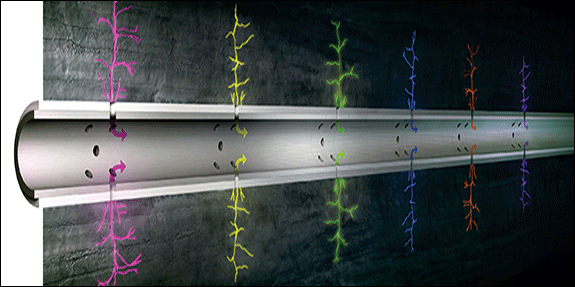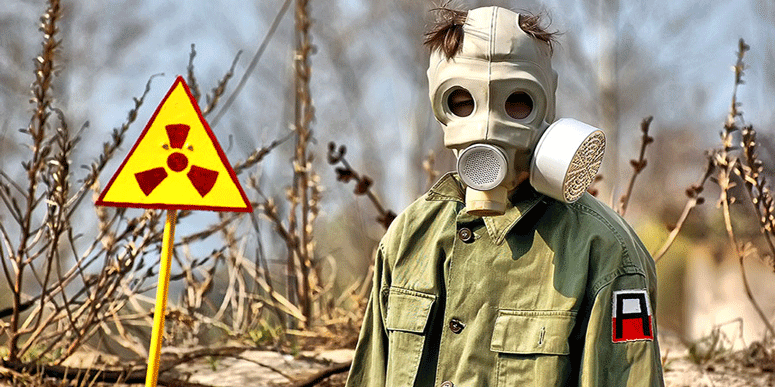Rising demand for flowback technologies that reduce the uncertainties associated with horizontal shale wells is also leading to the creation of more hydrocarbon and water tracers. Used to identify the source of production in a well, these chemical-based tracers may play an important role in the shale industry’s effort to come up with more cost-effective fracture designs.
The tracers are deployed downhole along with the sand or proppant material that is being pumped into the fractures. The chemical compounds are tailored to flow with oil or the water produced in oil and gas wells. Unlike radioactive tracers, which require a well to be shut in for a log run, chemical tracers are sampled at the wellhead in continuous intervals during the flowback and production periods and then analyzed in a laboratory.
For production analysis, the concentration of the tracers that flows back to the surface over time can determine the effectiveness of each stage. All things being equal, on a 30-stage well, the tracers from each stage would represent between 3% and 4% of the total concentration of tracer material sent downhole. But in reality, that is hardly ever the case.
“We see cases where stages are producing 10%, 12%, or 14%, and others where there is hardly any—1% or less,” said Claudio Ramos, a region engineering adviser with CoreLabs’ ProTechnics diagnostic service.
ProTechnics began the year with 10 oil tracers, 10 gas tracers, and 14 water tracers. This fall, those numbers increased to 28, 15, and 29, respectively. By early next year, the company plans to have 34 tracers for oil and water, and, hopefully, more gas tracers as well.
This rapid pace of development is being driven largely by the growing number of fracture stages that shale producers are placing in horizontal wells. The first multistage shale wells drilled several years ago had about three stages separated by 2,000 ft or 3,000 ft. At that time, most companies were primarily using chemical tracers to determine whether any production was coming from the toe of a well—the area of the lateral section believed to contribute the least overall production.
“The number of stages and the number of clusters per stage has significantly changed since the beginning,” said Ramos. “Now, 20 to 30 stages is normal, and 50 stages is not too outside of normal.” He added that some companies are even experimenting with 80, 90, and 100 stages.
Another factor driving demand is that many shale producers have moved into the infill development stage, which involves drilling wells closer together to produce as much as possible from their acreage. Also becoming increasingly common are stacked drilling programs that target different formations at different depth intervals from the same pad site.
“So now, they want to know what’s the vertical communication between these wells and what’s the lateral communication between these wells,” said Ramos. “And this presents us with the need for more tracers because often we want to have a unique tracer per segment or per stage, if possible, for each well.”
For example, on a pad with six wells, each well may have 25 stages, which would require 150 different tracers to identify each stage from each well. Since that number of individual tracers does not exist, a single tracer is used in different well segments to detect communication: one tracer for the heel, one for the middle section, and one for the toe, and then repeat this for each well. For a pad site with six wells, this makes it possible to do the job with only 18 tracers.
ProTechnics advises a minimum flowback sampling period of 90 days to get a fair assessment of well behavior. “However, lately, we have been asked more often about what is happening with production 6 to 9 months after the frac,” Ramos said.
To extend the analysis period, he said, sometimes a double dose of tracer material is used to distribute detectable concentrations for up to a year. In at least one case, ProTechnics has been able to recover tracers 22 months.

 石油圈
石油圈


